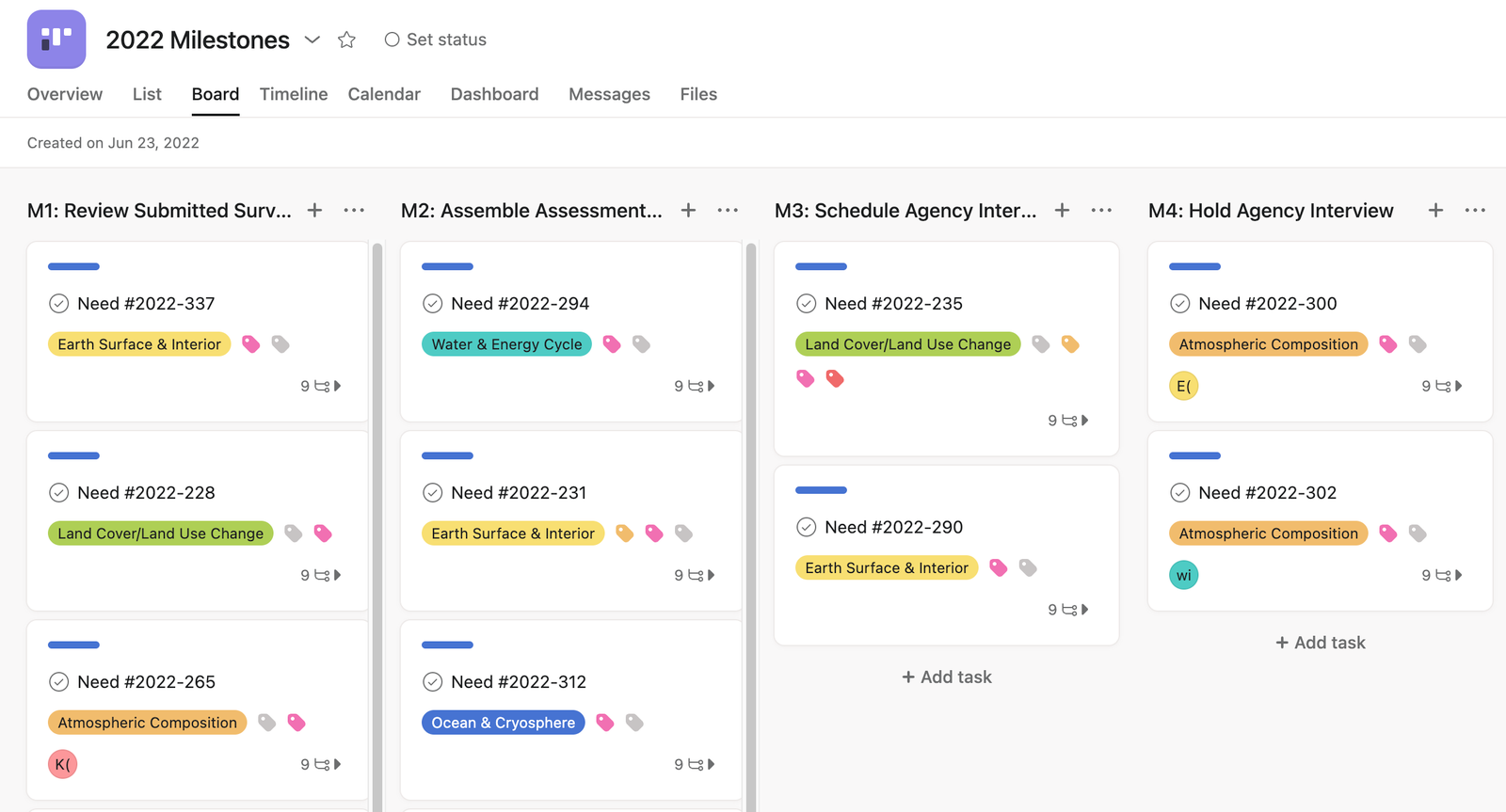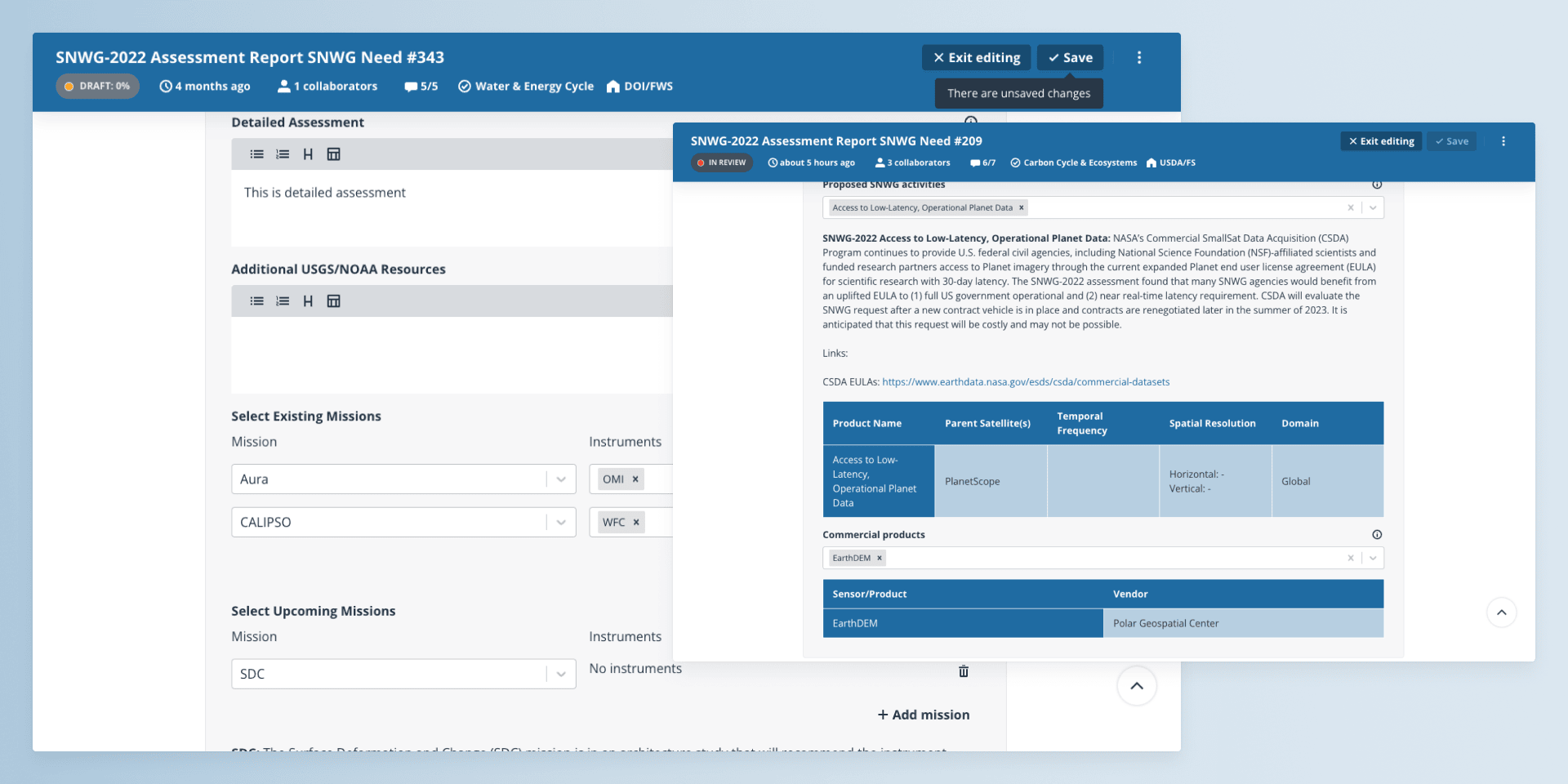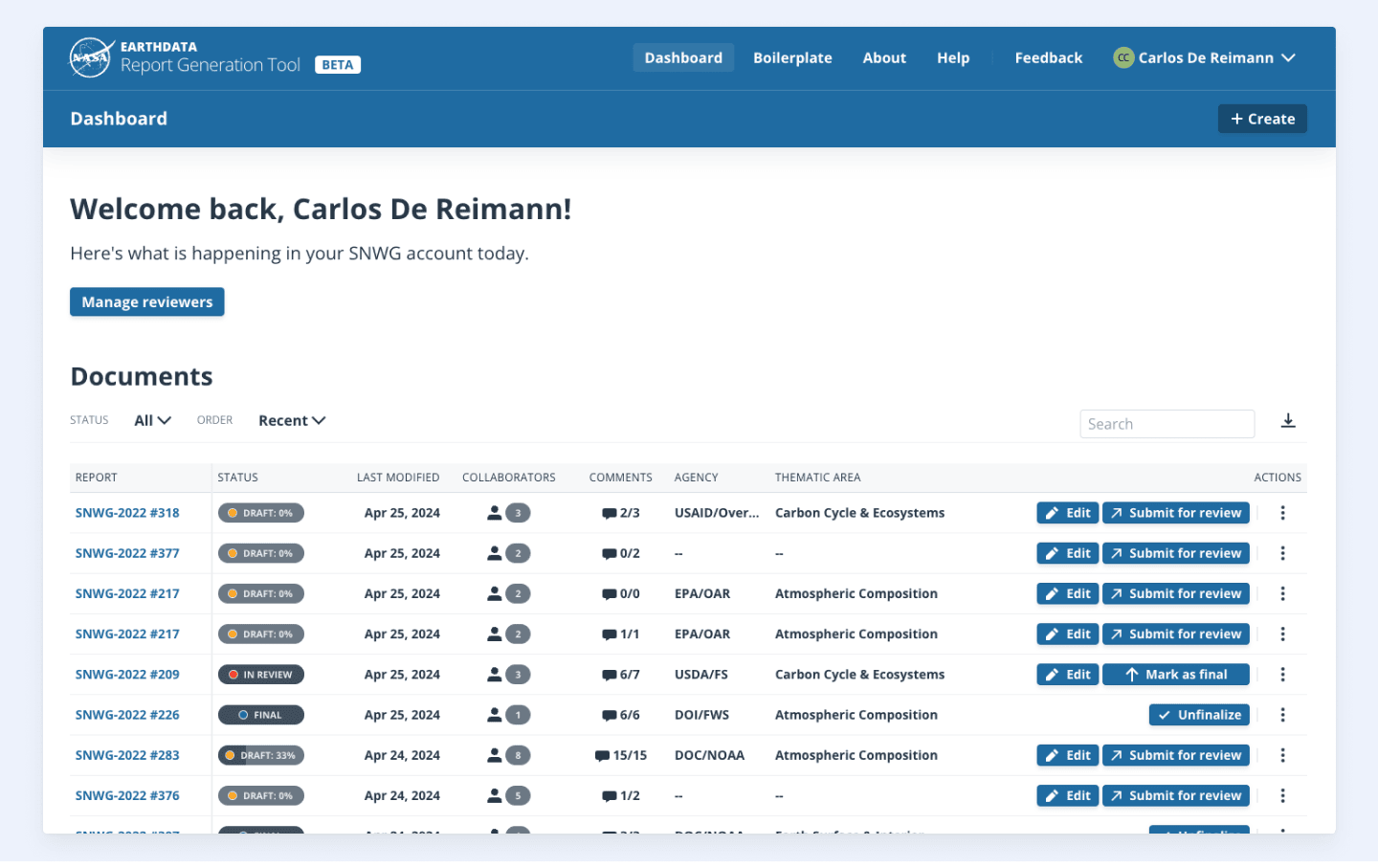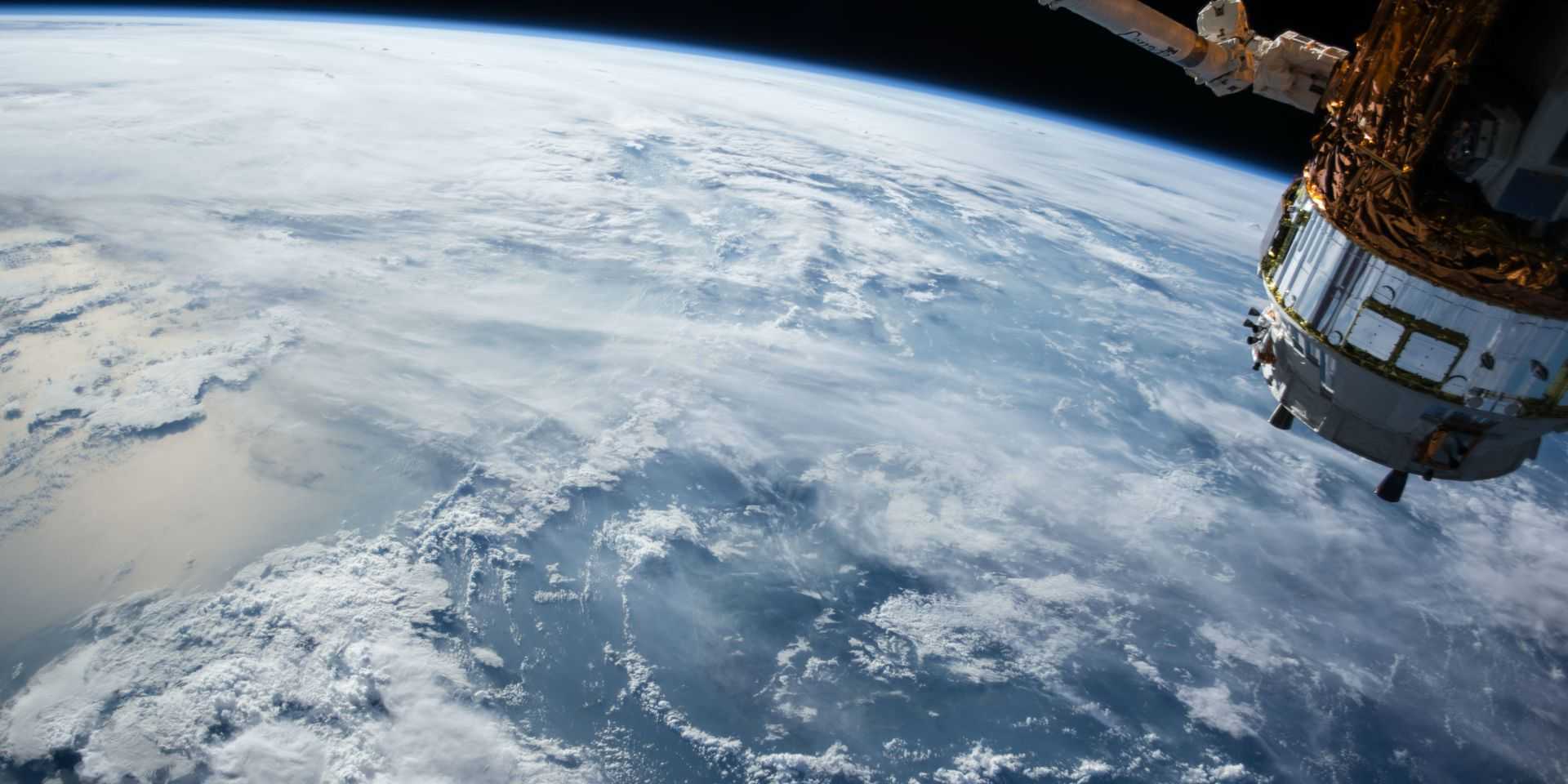An end-to-end solution to manage NASA’s Satellite Needs survey, a critical tool for documenting and coordinating U.S. Federal Agencies' earth observation data needs. Led by the Satellite Needs Working Group, the survey process has been streamlined through customized project management software and a bespoke Report Generation Tool. The result is a more coherent, efficient process that delivers consistent, accurate, and timely recommendation reports, better meeting the diverse satellite needs of federal agencies.
Overview
Initiated by the White House’s National Science and Technology Council, the Satellite Needs Working Group (SNWG) conducts a biennial survey to document and communicate the Earth Observation needs of US Federal Agencies to NASA and other satellite providers. Development Seed built an end-to-end solution for the SNWG team, including customizations to their project management system and a bespoke Report Generation Tool (RGT) to document the survey results formally.
Challenge
It is difficult for the SNWG team to keep an overview of US government agencies' satellite needs and track the status of survey responses and suggested satellites. Ensuring the 100+ final survey reports are consistent and accurate is very labor-intensive.
Outcome
The SNWG team spends significantly less time managing the Satellite Needs survey. Agencies have their satellite needs better met, and recommendation reports are more consistent, accurate, and timely by tying multiple datasets and platforms into a coherent process.
The Satellite Needs Working Group (SNWG) determines what Earth Observation (EO) data US federal agencies need to fulfill their mission. Federal agencies have a wide range of data needs, from monitoring water and air quality to updating land use information and everything in between.
With limited budgets and long development time, capturing the full variety of needs is important without duplicating efforts. The SNWG team does this with their biannual Satellite Needs Survey by combining surveys, interviews, information consolidation, and report writing. These assessment reports, written in a standardized format, are the final output of the assessment cycle and are sent to the White House before final submission to the US Group on Earth Observations (USGEO). Until the 2020 Needs Survey, the team used off-the-shelf word processing software to write the assessment reports. This proved difficult to manage the increasing amount of reports to write. A new approach was needed, with 116 reports to write in the 2022 Assessment Cycle.
End-to-end Solution
Development Seed’s solution consists of two main parts:
- Customized workflows for the SNWG team’s management software, Asana.
- Report Generation Tool (RGT) to manage the creation, review, and generation of standardized assessment reports.
Asana Customizations
Our team worked on adding extensions and improvements to Asana to allow for the SNWG team to manage the Needs Surveys best. Each need is assigned a unique identifying number and imported into Asana as a card. These cards are then sorted into columns that signify the steps required to go from survey to interview to writing, reviewing, and finalizing the report. These need cards are tagged with several types of metadata, including the thematic area and the submitting agency. Links to relevant resources and the report are automatically added to need ID cards. Deadlines are automatically scheduled, and users are notified when steps are marked as completed.

Various need cards sorted by status.
Users can also propose new SNWG solutions through a Google Form. Our team linked the form submissions to the Asana board, so each submission creates a new card with desired metadata, such as linking to need cards, solution type, and types of geophysical variables.
Report Generation Tool The main work was to build the tool to write, review, and finalize need reports. The RGT acts primarily as a controlled text editing tool. This is controlled at the user level (only certain users can edit certain reports) and the text-block level (users can only edit certain chunks of text). This ensures that only the right people are writing, reviewing and finalizing reports, and writers are only editing text in areas that require customization at the individual report level.

RGT report editing interface. Users add text to individual report sections instead of freely editing the whole document to ensure consistency across reports. Users also select items from various databases to include information about various satellites.
Reports can then be viewed in the format that matches the formal report submission. These reports include boilerplate text from selected satellite products and text consistent across all reports. Users can track the status of the reports they’re working on and view any finalized report.

RGT dashboard
Reception
We received positive feedback from users and other stakeholders at the end of the 2022 Assessment Cycle. The tooling made the writing process more straightforward for users, drastically reducing the SNWG facilitators' overhead burden.
We continue to work with the SNWG team to improve the tooling and assessment process further.
About NASA IMPACT
NASA’s Interagency Implementation and Advanced Concepts Team (IMPACT) drives the development of the latest technologies for novel Earth data science and applications. Development Seed has partnered with IMPACT to advance its goals of enhancing data infrastructure and technology to encourage the adoption of complex Earth observation data within other federal agencies, institutions, and science users.
Have a challenging project that could use our help?
Let's connect
We'd love to hear from you.
